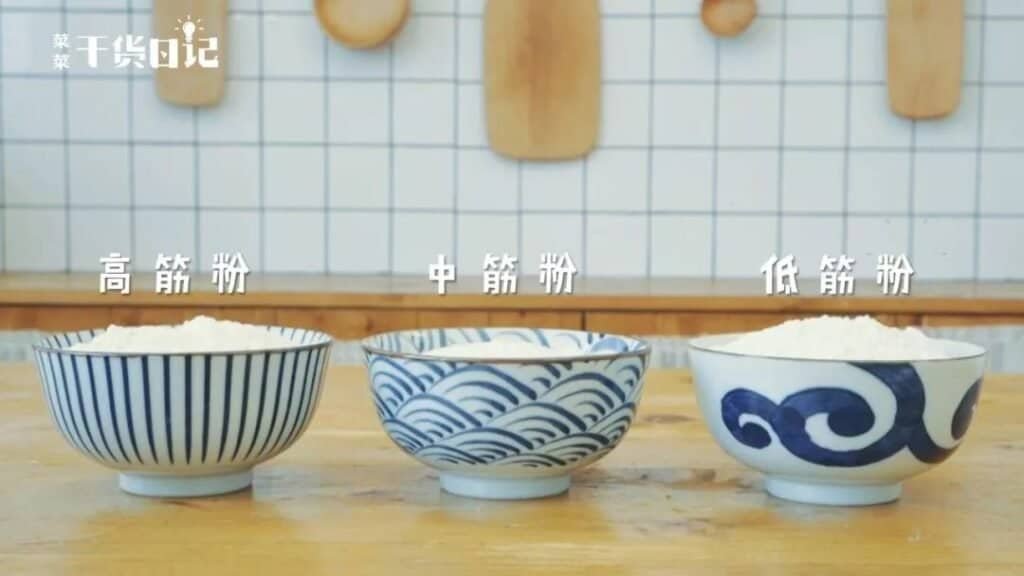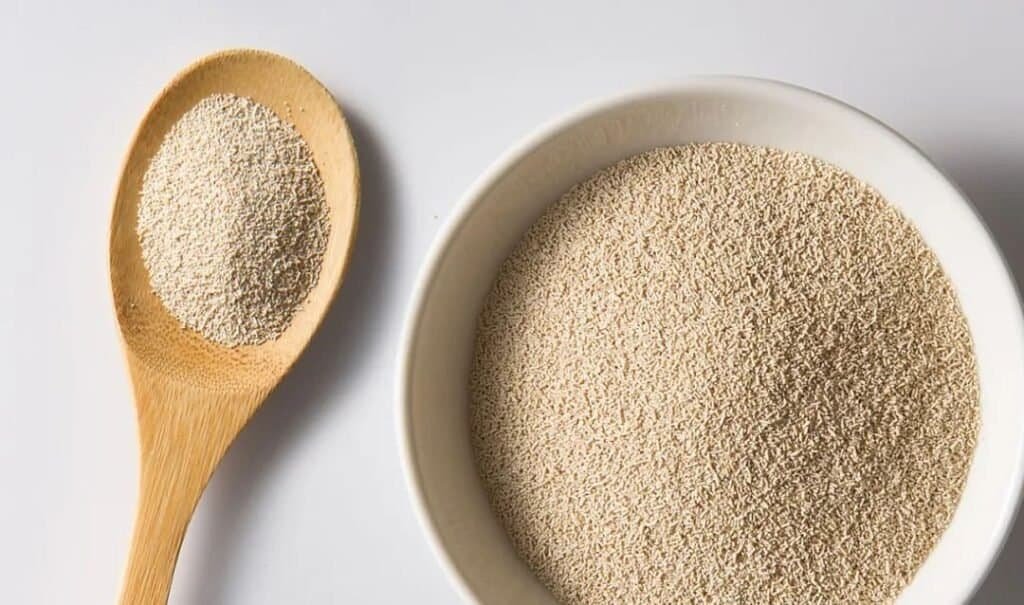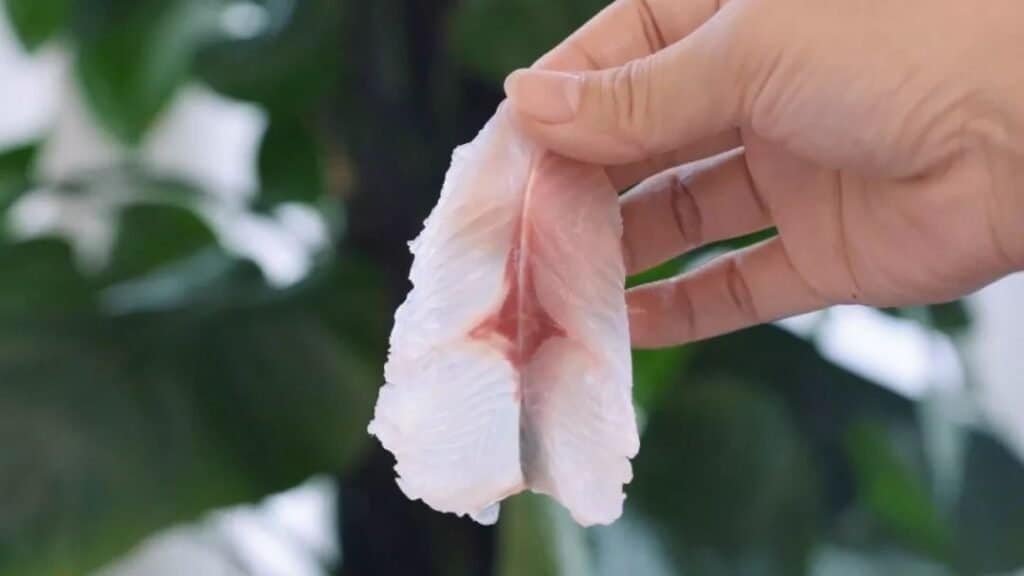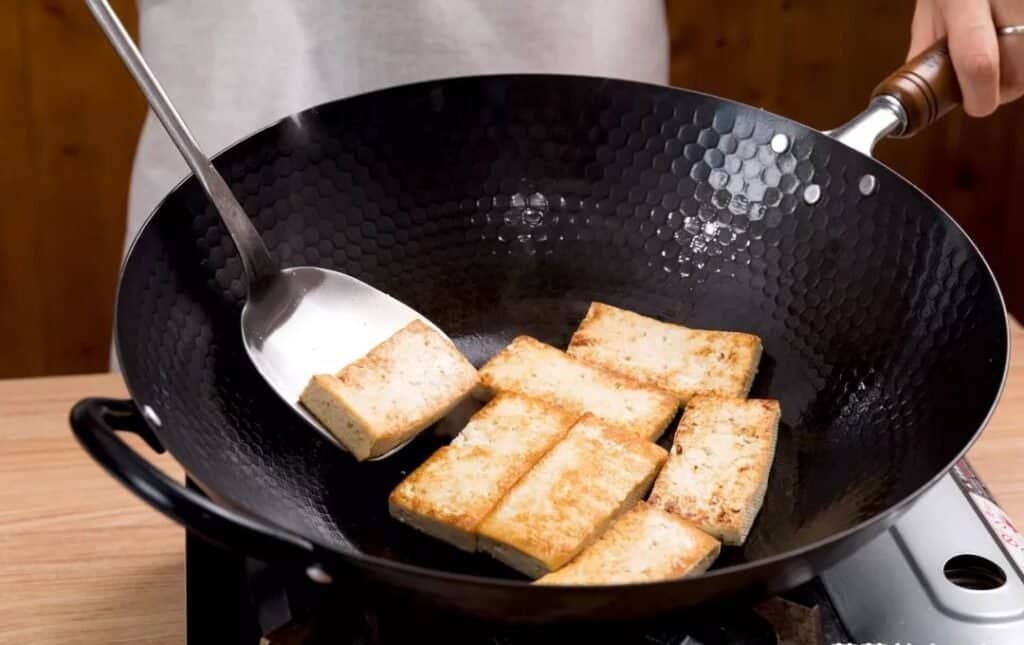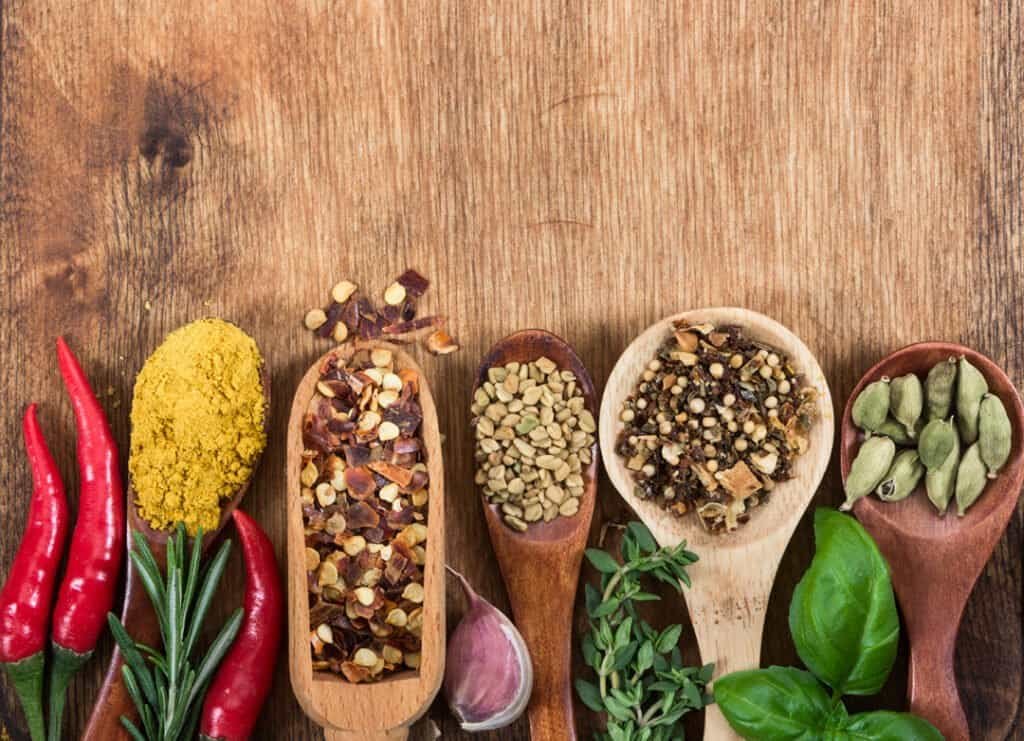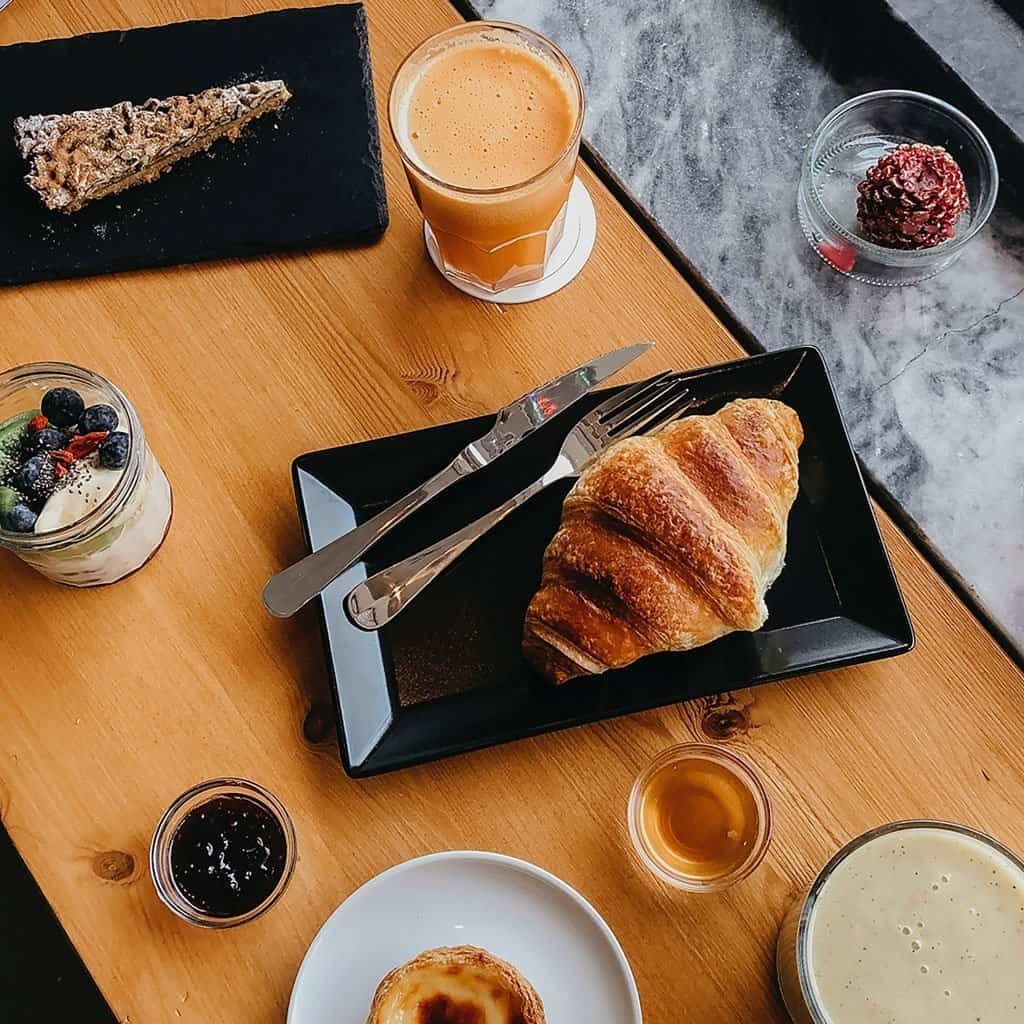Whether it’s a homely meal or a restaurant delicacy, seasonings are fundamental to enhance the dish’s taste, aroma, and color, stimulating appetite. What are the common seasonings, and how can we use them effectively to craft culinary delights? This article exhaustively introduces 10 types of seasonings and 100 kinds of spices, an indispensable basic knowledge for home cooking and those aspiring to learn culinary skills. Incredibly practical, it’s recommended to bookmark this guide (painstakingly written over three days, it’s a unique resource, handy for future reference).
Classification of Seasonings
Daily, we often refer to the ‘seven kitchen essentials: firewood, rice, oil, salt, soy sauce, vinegar, and tea.’ Excluding firewood (the heat source) and rice (the staple), the rest are all seasonings, indispensable in our daily cooking.
Broadly, seasonings include salt enhancers, sour enhancers, sweet enhancers, umami enhancers, and spices, providing salty, sweet, sour, spicy, umami, aromatic, and bitter flavors. Examples include salt, soy sauce, vinegar, monosodium glutamate, sugar (separately discussed), star anise, fennel, Sichuan pepper, mustard, etc.
- Saltiness: Salt, soy sauce, sauce products.
- Sweetness: Sucrose, maltose, glucose, fructose, sugars (including white and brown sugar), honey, syrup, rock sugar.
- Sourness: Vinegar, tomato sauce, deteriorated soy sauce, and wine as souring agents.
- Spiciness: Chili, pepper, ginger, green onion, garlic.
- Umami: MSG, chicken essence, shrimp paste, oyster sauce, shrimp oil, fish sauce.
- Aromatic Flavors: Fennel, cinnamon, Sichuan pepper, cooking wine, fermented rice, sesame oil, cinnamon sauce, soy sauce, cloves, rose, etc.
- Bitterness: Tea, coffee, bitter melon, lotus stamen.
Brief Introduction to Ten Major Types of Seasonings
1. Salt:
- Mainly composed of sodium chloride. Available in iodized and non-iodized varieties, it’s essential to monitor intake as excess can lead to high blood pressure. In China, it’s recommended that adults consume no more than 6g of salt per day.
2. Soy Sauce:
- Primarily salty with umami and aromatic flavors, soy sauce enhances and improves the taste and color of dishes. There are two main types: light soy sauce (for flavor) and dark soy sauce (for color). Made from soybeans or defatted soybeans, wheat or wheat bran, water, and salt, it undergoes fermentation, producing a reddish-brown color and a unique soy aroma.
3. Sauce Products:
- Sauces include dry yellow bean sauce, sweet bean sauce, broad bean paste, tomato sauce, sesame paste, meat sauce, fish sauce, shrimp paste, and fruit jams. These are paste-like condiments made from beans, wheat flour, fruits, meats, or seafood, each contributing unique flavors.
4. Sugar:
- Types of sugar include sucrose, maltose, glucose, fructose, and honey. They are used in cooking primarily for sweetening, flavor enhancement, and complex flavor creation.
5. Sour Flavoring Agents:
- Vinegar and similar agents can counteract sweetness and enhance other flavors. In Western cuisine, they’re often used in salad dressings or for pickling.
6. Umami Seasonings:
- MSG, chicken powder, shrimp paste, oyster sauce, and similar ingredients enhance the umami flavor in various dishes.
7. Alcoholic Beverages:
- Used primarily for eliminating gamey tastes, cooking wines like yellow wine, beer, and high-proof spirits are essential in many recipes.
8. Cooking Oils:
- Various oils each contribute unique flavors and cooking properties to dishes.
9. Spicy Seasonings:
- Chili, Sichuan pepper, pepper, ginger, green onion, and garlic add layers of heat and spice, each contributing distinct flavors to different regional cuisines.
10. 100 Spices:
- The world of spices is vast and varied, each with unique characteristics and uses that bring depth and complexity to dishes.
Spice category:
There are many types of spices, whose main function is to enhance various flavors, making the taste more layered and complex.
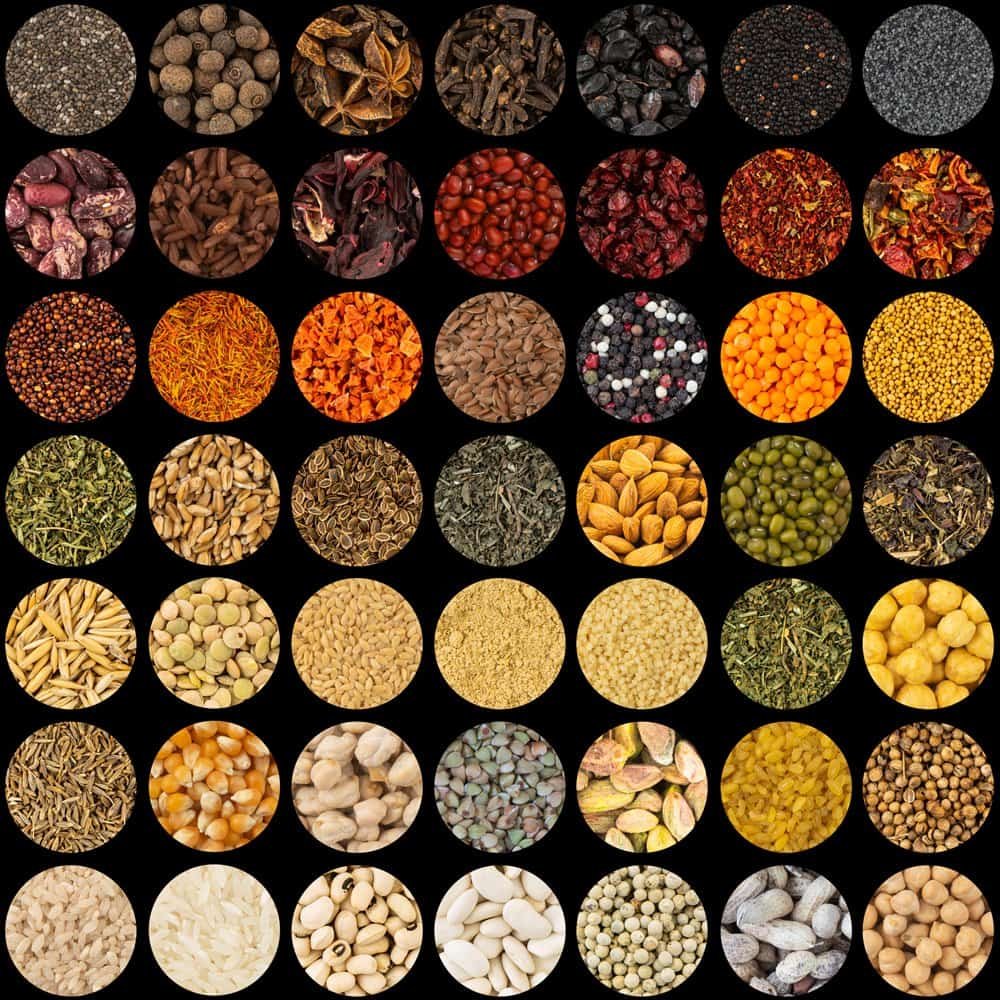
- Star Anise (八角): A key spice in Chinese cuisine, used in braising, stewing, and pickling to enhance flavor and reduce fishiness. Typically, three segments or a whole flower is added to a dish. It’s also a crucial ingredient in five-spice powder.
- Ginkgo Nut (白果): Known for its lung-beneficial properties, it’s important to remove its outer shell, red membrane, and green germ before cooking. Avoid cooking it with fish.
- White Pepper (白胡椒): Adds a spicy kick to braised dishes and helps in digestion.
- White Cardamom (白蔻): Its skin is aromatic, while the seeds are bitter. It’s used for its de-greasing and odor-neutralizing properties, often paired with other spices like galangal and angelica root.
- White Peony Root (白芍): Known for its bitter and sour taste, it helps in reducing fishiness.
- Bai Zhi (白芷): A bitter and aromatic spice, effective in removing unwanted odors and adding a spicy fragrance.
- Thyme (百里香): Adds a fragrant aroma to dishes.
- Mint (薄荷): Used for its refreshing taste, especially in cold dishes and as a garnish for cakes and pastries.
- Bi Ba (荜菝): Similar to white pepper, used for its numbing and spicy flavor, especially in fish and poultry dishes.
- Betel Nut Slices (槟榔片): Used for its diuretic properties and flavor enhancement.
- Tsao-ko (草果): Adds a smoky flavor to beef and mutton dishes.
- Grass Cardamom (草寇): Enhances the flavor and reduces gamey taste in organ meats.
- Agarwood (沉香): Used to add a spicy aroma to dishes.
- Dried Tangerine Peel (陈皮): Adds a citrusy aroma and aids in digestion.
- Dan Pi (丹皮): Known for its intense and unique aroma.
- Angelica Root (当归): Adds a herbal flavor to braised dishes and soups.
- Codonopsis Root (党参): Enhances flavor and reduces gamey taste.
- Cloves (丁香): Strongly aromatic and used sparingly.
- Licorice (甘草): Sweet and used for balancing flavors in braised dishes.
- Dried Ginger (干姜): Adds a spicy flavor.
- Gan Song (甘松): Essential for goose brine, adds a strong flavor.
- Cassia Twig (桂丁): Strongly aromatic, used in Sichuan-style brine.
- Cassia Bark (桂皮): Adds a sweet and spicy flavor to meats.
- Black Pepper (黑胡椒): Common in soups and Western dishes.
- Lantern Pepper (灯笼椒): A spicy pepper from Guizhou.
- Goji Berries (枸杞): Sweet and slightly sour, used in soups and porridge.
- Black Goji Berries (黑枸杞): Similar to red goji berries.
- Cardamom (红豆蔻): Adds a complex aroma to poultry and fish dishes.
- Hawthorn (山楂, 红果): Used for its flavor-enhancing properties.
- Hong Ying (红英): Adds a unique flavor to dishes.
- Fenugreek (葫芦巴): Used for its strong aroma and slight bitterness.
- Sichuan Pepper (花椒): Adds a numbing and spicy taste, important in Sichuan cuisine.
- Astragalus (黄芪): Adds a sweet flavor and reduces gamey taste.
- Gardenia Fruit (栀子, 黄栀子): Used for coloring and adding a slight bitterness.
- Red Yeast Rice (红曲米): Mainly used for coloring dishes.
- Patchouli (藿香叶): Strong aroma, used in fish dishes.
- Kaempferia Galanga (积壳): Adds a spicy and sour flavor to hot pot and spicy dishes.
- Turmeric (姜黄): Used for coloring and adding flavor.
- Schizonepeta (荆芥): Adds a spicy and slightly bitter taste to cold dishes.
- Dried Chili (干辣椒): Adds spiciness and stimulates appetite.
- Chopped and Fermented Chili (剁椒与糟辣椒): Used in various dishes for a spicy flavor.
- Sichuan Peppercorn (小米辣): Adds a fresh, spicy flavor.
- Chili Oil (红油辣椒): A key ingredient in Sichuan cuisine.
- Pickled Pepper (泡椒): A Sichuan specialty, used in spicy dishes.
- Galangal (良姜): Adds a spicy and aromatic flavor, important in braising and stewing.
- Red Oil Chili (红油辣椒): A common Sichuan seasoning with a bright red color and spicy, fragrant taste. It’s widely used in cold dishes, noodles, and dipping sauces.
- Pickled Pepper (泡椒): A Sichuan specialty made from fresh chili peppers. It’s flavorful with a spicy, sour taste and essential for dishes like Sichuan fish-flavored shredded pork and pickled pepper beef.
- Erjingtiao Pickled Chili (二荆条泡辣椒): Known for its moderate spiciness and rich aroma, it’s crucial for traditional Sichuan dishes like fish-flavored shredded pork.
- Bullet Head Pickled Chili (子弹头泡辣椒)
- Galangal (良姜): A spicy and aromatic spice effective in removing fishiness and enhancing flavor. Commonly used in roasting, braising, and stewing, especially with poultry and strong-flavored foods.
- Monk Fruit (罗汉果): Sweet and fragrant, used for reducing fishiness and enhancing the aftertaste and color of dishes. Often paired with spicy ingredients in braising liquids.
- Basil (罗勒): Also known as fish-smelling herb, it’s used for its anise-like aroma.
- Fresh Sichuan Pepper (鲜藤椒): Adds a stronger numbing and spicy flavor than dried ones.
- Rosemary (迷迭香): Has a tea-like aroma and is slightly spicy and bitter, commonly used in steak and roasting.
- Muxiang (木香): A term for various fragrant herbs used to remove bloodiness and odors. Great for spicy brine and dishes with strong odors.
- South Ginger (南姜): Spicy and aromatic, used for eliminating fishiness. It’s one of the ingredients in five-spice powder.
- Dried Lemon (柠檬干): Used for reducing fishiness, enhancing flavor, and cutting through greasiness.
- Pai Grass (排草): Adds fragrance and has preservative properties in braising liquids.
- Thousand-Mile Scent Root (千里香根): Spicy and slightly bitter, enhances the aftertaste of food.
- Thousand-Mile Scent Seeds (千里香籽): Similar in use to the root, enhancing the aftertaste and longevity of dishes.
- Green Fruit (青果): Also known as olives, they have a sweet, sour, and astringent taste and are used in soups and stews with meat and fish.
- Green Sichuan Pepper (青花椒): Adds a numbing and fresh aroma to dishes.
- Green Cardamom (青扣): Intensely aromatic, used to enhance flavor and reduce fishiness.
- Nutmeg (肉蔻): Strongly aromatic and spicy with a bitter aftertaste, used in meat dishes and brine.
- Amomum (砂仁): Mildly spicy and warm, used for reducing fishiness and providing a refreshing sensation.
- Fragrant Amomum (香砂仁): Adds a cooling, spicy aroma and is widely used in hot pot, Sichuan cuisine, and braised dishes.
- Sun Spring Amomum (阳春砂仁): Full-bodied and aromatic, used in pickling and braising.
- Shan Huang Pi (山黄皮): Enhances aroma and sweetness in dishes.
- Mountain Nai (山奈): Spicy and sweet, used to remove odors and enhance flavor, particularly in beef, mutton, and poultry.
- Hawthorn Slices (山楂片): Aid in digestion and enhance the meatiness and texture of dishes.
- Dill Seed (莳萝籽): Spicy with a unique aroma, often used in spicy hot pots.
- Dill Weed (莳萝草): Spicy and aromatic, suitable for Western dishes like steaks and pizzas.
- North Sha Shen (北沙参): Sweet and cooling, used in traditional Chinese medicine.
- Sage (鼠尾草): Aromatic, used in cooking lamb, pork, and in soups.
- Wu Jia Pi (五加皮): Spicy and bitter, used in small amounts as a seasoning.
- Coriander Seeds (香菜籽): Used for adding aroma and reducing fishiness in various dishes.
- Fresh Coriander (鲜香菜): Used as a main ingredient, seasoning, or garnish in a variety of dishes.
- Dried Coriander (香菜干): Used in instant noodle seasoning packets, snacks, and soups.
- Spicebush (香果): Used whole in soups and cooking, or ground in baked goods like fruit cakes and sausages.
- Lemongrass (香茅草): Aromatic with a rich, natural lemon scent, used in spicy brine and seafood dishes.
- Bay Leaf (香叶): Aromatic and slightly bitter, used to add fragrance and remove odors in soups, meats, and stews.
- Fennel (小茴香): Sweet and fragrant, used to enhance aroma and reduce fishiness in braised meats and fish.
- Magnolia Flower (辛夷): Highly aromatic, used in braised meats and strong-flavored dishes.
- Cumin (孜然): Strongly aromatic and often used in roasted and grilled meats.
- Purple Grass (紫草): Mainly used for coloring in Sichuan cuisine.
- Perilla (紫苏): Spicy and aromatic, used in cooking snails, fish, and crab, and for preserving food.
- Curry (咖喱): A blend of various spices commonly found in Indian, Thai, and Japanese cuisines.
- Chuanxiong (川芎): Rich in aroma, slightly bitter, and numbing.
- Longan (桂圆): Nutritious and used in traditional Chinese medicine, often in soups and sweet dishes.
- Shiitake Mushroom (香菇): Highly nutritious and flavorful, used in soups and stews.
- Fat Sea (胖大海): Used in traditional Chinese herbal teas and soups for its health benefits.
- Mustard (芥末): Spicy and aromatic, used in pickling and as a condiment for raw meats and salads.
- Rose (玫瑰花): Used in desserts and sweet dishes for its fragrance.
- Wood Ear Mushroom (木耳): Nutritious and used as a main or side ingredient in various dishes.
- Hazel Mushroom (榛蘑): Rich in protein and minerals, used in soups and stews.
- Saffron (藏红花): Aromatic, used for adding fragrance and color.
- Daylily (黄花菜): Used in soups and noodles for its flavor and health benefits.
- Chrysanthemum (菊花): Used for its visual appeal and health benefits in soups and noodles.
- Lingxiang Grass (灵香草): Highly aromatic, used in tobacco and perfumery.
- Five-Spice Powder (五香粉): A blend of various spices, convenient for seasoning a variety of meat dishes.
These seasonings and spices are the foundation of delicious cooking. Understanding their nature and applications can transform simple ingredients into culinary masterpieces. Happy cooking!

